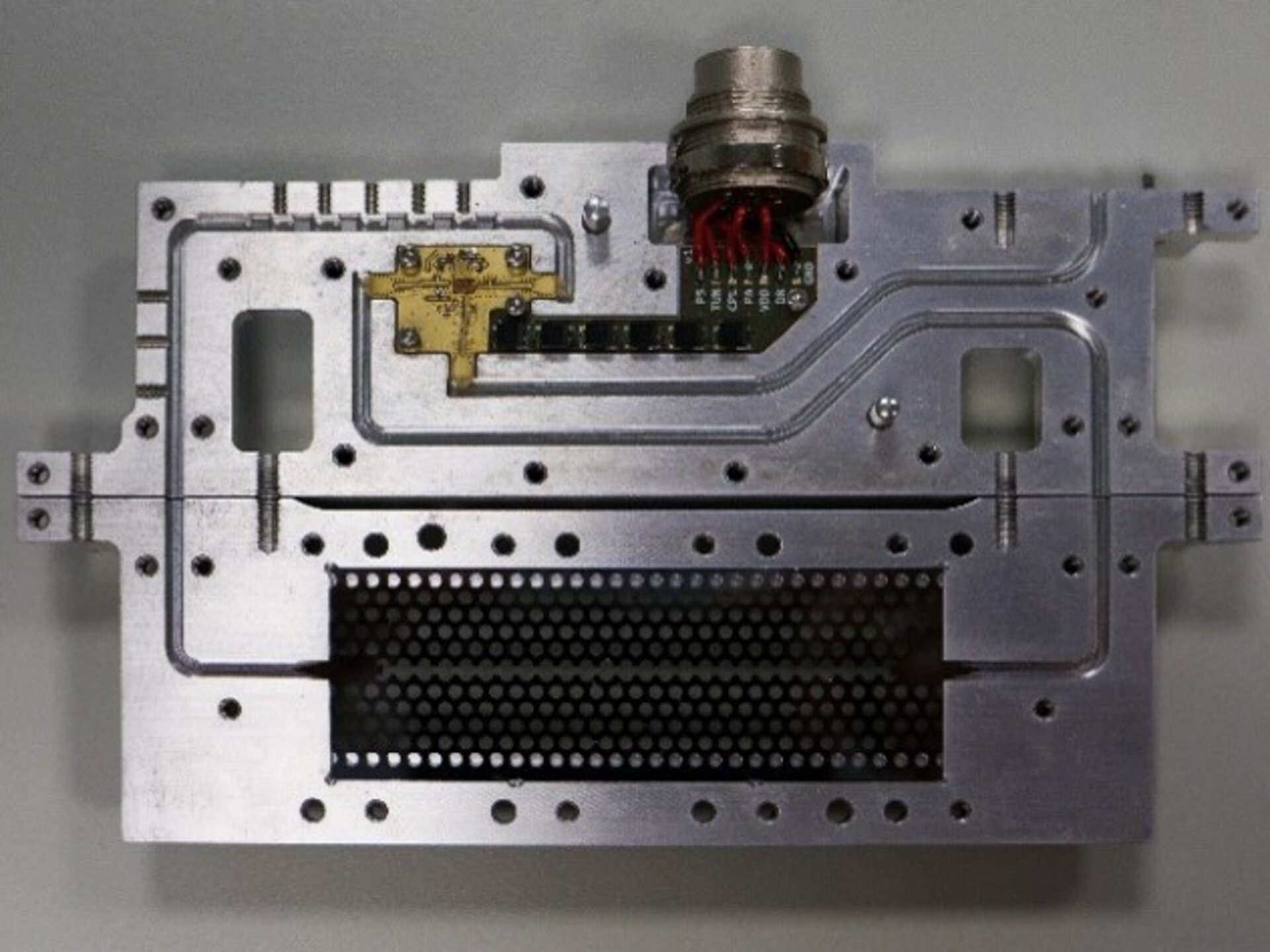A World First - new oscillator achieves highest Q-factor ever
A TDE funded activity with IMST GmBH in Germany, has made a breakthrough in improving the performance of crystal oscillator technology for use in space.
Oscillators are electronic circuits used in space craft that give out an alternating signal or wave. They are used to stabilise the radio frequencies needed by antennas, or to keep track of time. They operate on the same principle, that there is an output, produced by an amplifier and fed back into the input, creating a phased signal – in, amplify, out. Most people know about quartz watches, which use the same kind of oscillators -- ones that rely on a crystal resonator that changes shape fractionally when placed under an electric field. This activity utilised voltage-controlled oscillators, where the frequency of how quickly the oscillator swings is controlled by different voltages. Any oscillator’s effectiveness is measured by something known as the Q-factor, or the amount of energy lost on each cycle of oscillation. A high Q-factor means that once the electric field is removed, the oscillator will continue swinging for many cycles before it stops.
This TDE activity began life as a PhD thesis studying the existing oscillators and how the state-of-the-art could be improved. After this literature review, an intention was set to develop a local oscillator that could operate in higher frequencies (most oscillators currently work at 30 Ghz). Reaching higher frequencies would mean the component could cope with more complex circuity, mass and power consumption without sacrificing reliability.
Excitingly, the activity has produced a high-performance crystal oscillator with an unprecedented Q-factor of 108,300 (a typical crystal oscillator has a Q-factor of 10,000-100,000) – a world first.
The Q-factor, also called a quality factor, was partly possible due to the innovation of using dielectric materials in the resonator. During the manufacturing of this component a decision was made not to heat the material through as it would be normally. To the surprise of the team, this worked to increase the Q factor.
Not only did the oscillator achieve such impressive results in terms of the Q-factor, it is also much lower in terms of power consumption and size (just 442 grams).
While the achievement is tantalising, the activity also found that the novel material is sensitive to changes in temperature which means a follow on activity is necessary to advance the oscillator, which currently stands at TRL 4. There are hopes to follow up this activity to make it suitable for use with different Earth Observation instruments and, with its impressively low phase noise, also with telecom broadcast instruments.
Activity T106-601EF closed in 2023.


